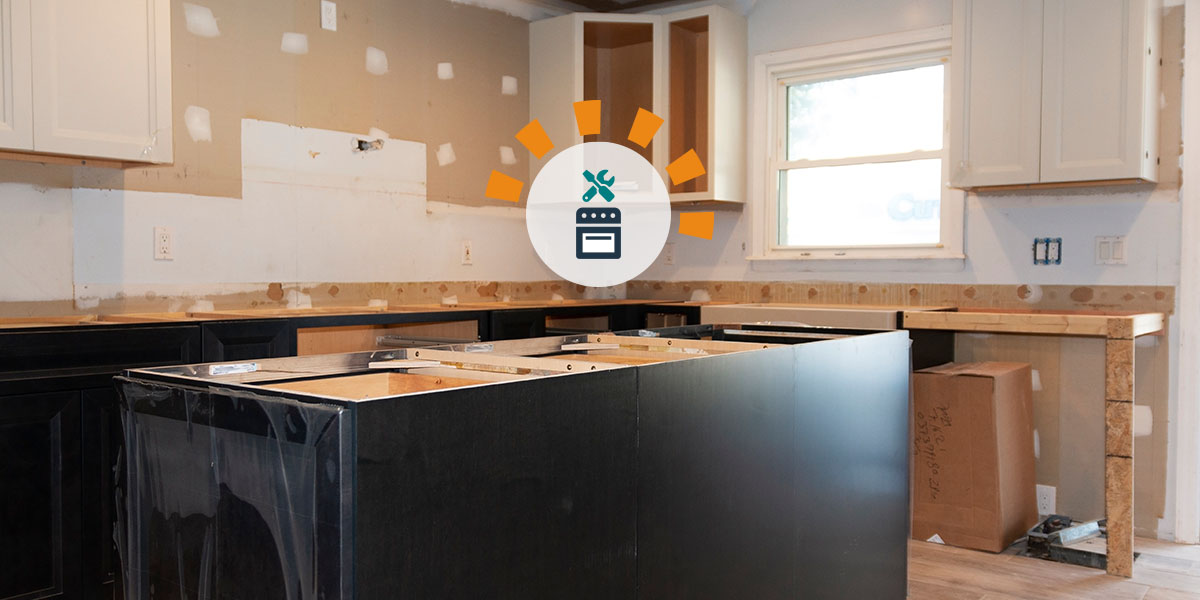To remove a gas fireplace, turn off gas supply, disconnect lines and carefully detach fireplace unit. Removing a gas fireplace requires a systematic approach to ensure safety and proper dismantling of the unit.
It involves shutting off the gas supply, disconnecting the gas lines, and carefully removing the fireplace to avoid any damage or gas leaks. By following the correct steps and procedures, you can successfully uninstall a gas fireplace without any complications.
Whether you are upgrading your heating system or renovating your living space, knowing how to safely remove a gas fireplace is essential for a smooth and efficient process. Let’s explore the detailed steps involved in removing a gas fireplace and the importance of following safety guidelines throughout the removal process.

Assessment And Planning
Assessment and Planning are crucial before removing a gas fireplace. Assessing the Situation and Creating a Removal Plan are vital steps to ensure a smooth process.
Assessing The Situation
Before starting, inspect the gas fireplace thoroughly. Check accessibility, connections, and potential hazards. Document the details for reference.
Creating A Removal Plan
Develop a step-by-step plan with tools required, safety measures, and disposal options. Consider professional help for complex tasks.

Credit: www.amazon.com
Gathering Necessary Tools And Materials
Gathering the necessary tools and materials is essential before starting to remove a gas fireplace. Be sure to safely collect all the required items to make the process efficient.
Safety Gear
Wearing proper safety gear is crucial to prevent accidents while removing a gas fireplace. Items such as safety goggles, gloves, and a dust mask should be used to protect yourself.
Tools And Equipment
The following tools and equipment are essential for removing a gas fireplace:
- Screwdriver – to remove screws and fastenings
- Hammer – for dismantling parts
- Adjustable wrench – to loosen nuts and bolts
- Utility knife – for cutting materials
- Flashlight – for better visibility in tight spaces
Disposal Containers
Prepare disposal containers to discard the removed parts and debris properly. Have trash bags or bins to dispose of materials safely and keep the area clean.
Disconnection Process
When removing a gas fireplace, the disconnection process is an essential step to ensure the safe and proper removal of the unit. This process involves turning off the gas supply, disconnecting the gas line, and removing the venting system.
Turning Off Gas Supply
To commence the disconnection process, the first step is to shut off the gas supply to the fireplace. Locate the gas shut-off valve, typically situated near the fireplace, and turn it to the off position. Ensure the valve is tightly closed to prevent any gas leaks.
Disconnecting The Gas Line
Following the gas supply shut-off, the next step is to disconnect the gas line from the fireplace. Use an adjustable wrench to loosen the connection between the gas line and the fireplace. Once loosened, carefully remove the gas line to fully disconnect it from the fireplace unit.
Removing The Venting System
The final step in the disconnection process is to remove the venting system. Start by unfastening the venting components from the fireplace, ensuring to carefully disconnect any seals or connections. Once detached, gently remove the venting system from the area surrounding the fireplace.

Credit: www.dumpsters.com
Dismantling And Removal
Dismantling and removing a gas fireplace requires careful attention to detail and a systematic approach. By following the right steps, you can ensure a safe and efficient removal process. This section will guide you through the process of dismantling and removing your gas fireplace.
Removing Surrounding Materials
Before you can start dismantling the gas fireplace, it’s essential to remove any surrounding materials. Start by clearing the area around the fireplace, ensuring there are no furniture or obstacles that may obstruct the removal process. If there’s a mantel, carefully detach it by unscrewing or unbolting it. Use a pry bar or a flathead screwdriver to remove the molding or trim around the fireplace.
Disassembling The Fireplace Components
Once you have cleared the surrounding materials, it’s time to disassemble the actual components of the gas fireplace. Begin by turning off the gas supply and disconnecting any gas lines or connections. Check the manufacturer’s instructions to ensure you are following the proper procedure for disconnecting the gas lines.
Next, remove the firebox by unscrewing or unbolting it from the wall. Use a screwdriver or a drill to detach any screws or brackets securing the firebox in place. Be careful when handling the firebox as it may be heavy.
If your gas fireplace has a glass door, carefully remove it by unscrewing the hinges or releasing the clips. Take extra caution when handling glass components to avoid any injuries.
Extracting The Fireplace Unit
Now that you have disassembled the fireplace components, it’s time to extract the unit from its position. Depending on the type of installation, the fireplace may be secured to the wall or floor. Use a pry bar or a wrench to loosen any fasteners or brackets holding the fireplace in place. Once the unit is loose, carefully lift it away from the wall and set it aside.
Ensure that you have assistance if the fireplace is heavy, as it may require more than one person to lift and carry it safely. Also, remember to wear protective gloves and eyewear during the removal process.
With the gas fireplace unit removed, you can now proceed with any further renovation or installation plans you have in mind. If you’re unsure about any steps or encounter difficulties during the removal process, it’s always a good idea to consult a professional to ensure the safe and proper removal of your gas fireplace.
Cleaning And Final Steps
After successfully removing a gas fireplace, it is crucial to follow proper cleaning and final steps to ensure a safe and efficient process. By inspecting the area, ensuring proper disposal methods, and maintaining safety standards, you can wrap up the removal process effectively. Here’s a step-by-step guide to help you complete these final tasks.
Inspecting The Area
Before cleaning, it is essential to inspect the area around the removed gas fireplace carefully. Look for any signs of damage, debris, or residue that might need attention. Here’s how you can conduct a thorough inspection:
- Examine the surrounding wall or flooring for any visible marks, scratches, or discoloration.
- Check the gas line and connections to ensure there are no leaks or loose fittings. If you suspect any issues, reach out to a professional for assistance.
- Inspect the chimney or venting system for any blockages or build-up that might hinder proper airflow. Clean these areas if necessary.
- Remove any leftover soot, ashes, or debris from inside the fireplace and dispose of them properly.
Proper Disposal
When it comes to disposing of elements related to a gas fireplace, following the correct procedures is essential for safety and environmental reasons. Here’s what you need to do:
- Dispose of any damaged or non-reusable parts of the gas fireplace according to local waste disposal guidelines. This includes components such as broken glass panels, burnt-out logs, or malfunctioning thermocouples.
- If your gas fireplace uses propane or natural gas, ensure that the fuel source is properly shut off before disposing of any remaining gas. Utilize a professional service to empty, disconnect, and safely dispose of the gas line.
- If you’re unsure about the disposal process or have specific regulations to adhere to, contact your local waste management or recycling center for guidance.
Maintaining Safety Standards
Throughout the cleaning and removal process, it’s crucial to prioritize safety. Follow these safety standards for a smooth experience:
- Use protective gear, such as gloves and goggles, to prevent injuries during the cleaning and disposal process.
- Avoid using abrasive chemicals or cleaning agents that can damage surfaces or release harmful fumes.
- If you come across any electrical components during the removal, make sure to turn off the power supply and safely disconnect the wires before handling them.
- During the inspection and cleaning, ensure proper ventilation by opening windows or doors to facilitate fresh air circulation.
By adhering to these cleaning and final steps, you can wrap up the gas fireplace removal process successfully, leaving the area clean and safe for further usage or renovations.

Credit: wd40.com.au
Frequently Asked Questions For Removing Gas Fireplace
Q: How Do I Remove A Gas Fireplace Safely?
A: Turn off the gas supply, remove the gas logs and burner, disconnect connections, and carefully dismantle the fireplace.
Q: Can I Remove A Gas Fireplace By Myself?
A: It is recommended to hire a professional to ensure proper removal and avoid any safety hazards.
Q: What Tools Do I Need To Remove A Gas Fireplace?
A: You may need a wrench, screwdriver, gas line shut-off key, gloves, goggles, and a fire-resistant cloth.
Q: Are There Any Safety Precautions When Removing A Gas Fireplace?
A: Wear appropriate safety gear, turn off the gas supply, ventilate the area, and carefully handle any gas connections.
Q: How Long Does It Take To Remove A Gas Fireplace?
A: The time to remove a gas fireplace varies but can range from a few hours to a full day depending on the complexity and size of the unit.
Conclusion
In sum, removing a gas fireplace requires planning and precaution. It’s a substantial project that needs professional assistance and careful consideration. By understanding the process and potential challenges, homeowners can ensure a safe and successful removal. With the right approach, the removal of a gas fireplace can improve the aesthetics and functionality of a home.
